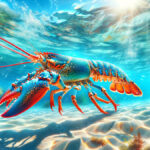The jaguar (Panthera onca) is the largest feline animal in the Americas.
Not only does it have a muscular body capable of taking down a variety of prey, but it also has an unusual way of finishing off its prey, unlike other large cats, delivering a powerful bite directly to the skull that can puncture the prey’s brain.
Some may find this confusing, as it is similar to cheetahs and leopards. However, jaguars have a patterned skin with dots within the spots, called rosettes. It is immediately recognisable as a jaguar when you see it.
But if you meet a feline larger than a manul cat in the wild, don’t try to tell them apart, the right thing to do is to run away from them all.
This is a jaguar being patted on the stomach. As the title says, it’s super cute.
Show adaptability to a variety of habitats. They are found from the rainforests of Central and South America to dry grasslands and even high in the Andes Mountains.
And they have amazing long-distance dispersal capabilities. Individuals have been known to travel over 500 km in search of territory. This highlights the crucial role they play in maintaining the ecological connectivity of their habitat.
Although they are predominantly solitary animals, recent research has revealed that they may exhibit more complex social behaviour than previously thought. Examples of prey sharing and even jointly caring for kittens have been recorded.
Although known primarily as land hunters, jaguars are also good swimmers. They often hunt underwater as well, using the element of surprise to catch a variety of aquatic prey. They can also cross large rivers and wetlands. This characteristic greatly extends their geographical range and potential prey range.
In many indigenous cultures of the Americas, jaguars have a long and deep cultural significance. It is often regarded as a symbol of power, fertility and wilderness spirit.
In some indigenous mythologies, the jaguar is often associated with notions of transformation and shapeshifting. Numerous stories depict them as humans by day and jaguars by night.
A series of rough coughs resembling the sound of sawing wood. This jaguar cry serves as a communication tool, especially during the breeding season.
Biting force is the highest among cats relative to body size. This force allows them to pierce the hard skulls of their prey, as mentioned at the beginning of this article, as well as hard armoured reptiles such as tortoise shells and armadillos. For them, all crabs may be what humans call softshell crabs.
Male jaguars are territorial, but not exclusively so. It has been observed that males exhibit an overlapping territorial model, where the male’s territory encompasses the territories of several females. This is a social system that maximises breeding opportunities and is considered by zoologists to contribute to the genetic diversity of the species as a whole.
The black variant with melanism in particular is a surprisingly stealthy hunter, despite its robust size and muscular structure. Densely forested areas are dark even during the day. They have the ability to move quietly and almost invisibly through such undergrowth.
Turning to the breeding behaviour of jaguars, the gestation period is approximately 100 days, after which the female gives birth to one to four young. The cubs are born blind and become visible two weeks later. This feature suggests the vulnerability of baby jaguars in the early years of life, as well as the crucial role of the mother in ensuring their survival.
Although they are not considered endangered, they are classified as ‘semi-threatened’ on the IUCN Red List. The main reason for this is habitat loss and fragmentation.



コメント